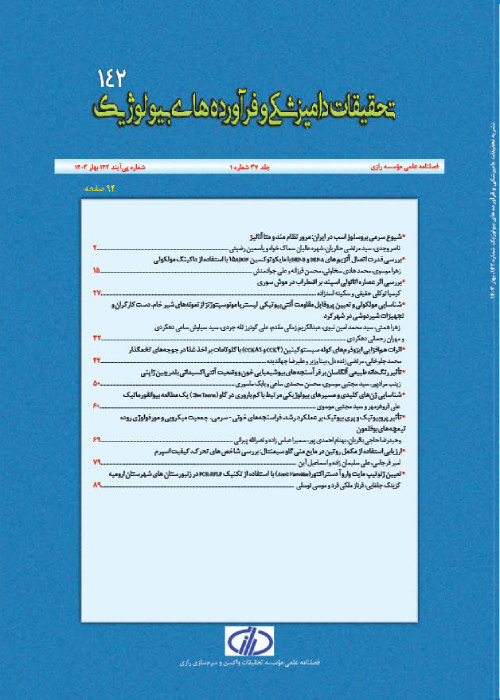Effect of organic and inorganic selenium sources and vitamin E on broiler performance and carcass characteristics in heat stress condition
Author(s):
Abstract:
This study was carried out to evaluate the impacts of organic (Sel-Plex® selenium yeast) and inorganic (sodium selenite) selenium and vitamin E (d1-α-tocopheryl acetate) on performance and carcass characteristics in broiler chickens. The effect of two types of house temperature and six treatments of feed additives were investigated in a 2×6 factorial experiment at 56 days period with 960 commercial broiler chicks (Arbor acres) using a completely randomized design with four replications and 20 day-old chicks in each pen. Birds reared in heat stress condition، exposed daily to 37oC for 8 hours throughout the experiment. Experimental feed treatments were: 1) control diet with no additives (Ctl)، 2) control + 0. 3 ppm Sel-Plex® (SY)، 3) control + 0. 3 ppm SY + 50 mg/Kg Vitamin E (SY+E)، 4) control + 0. 3 ppm sodium selenite (SS)، 5) control + 0. 3 ppm SS + 50 mg/Kg Vitamin E (SS+E)، 6) control + 50 mg/Kg Vitamin E (E). The birds reared in heat stress condition had lower weight gain at 1-21، 21-42 and 1-56 days (P>0. 05)، significantly lower feed consumption at 21-42 days and the whole experiment period (1-56 days)، and greater means of feed conversion ratio at 1-21 days than birds reared in normal temperature (P>0. 05). Weight gain was not affected by the additives treatments at the first 21 days، but birds fed diets supplemented with SY، SS، SS+E and E had significantly greater means for weight gain at the period of 21-42 and whole period of the experiment (P<0. 05). Feed consumption significantly affected by feed additives at 42-56 days (P>0. 05). Birds fed diets with SY and SS showed significantly lower feed conversion ratio throughout the experiment except at the first 21 days (P<0. 05). Interaction between the house temperature and feed additives had significant effect on weight gain throughout the experiment except at the 1-42 and 42-56 days of age، feed consumption at 21-42 days of age، and feed conversion ratio at whole experiment period (P<0. 05). Results of this study showed that house temperature and feed additives treatments and interaction between them had no significant effect on carcass yield percentage، liver percentage، abdominal fat percentage (P>0. 05). Mortality was not affected by the house temperature and feed additives and interaction between them (P>0. 05). According to results of this experiment the birds reared in heat stress condition had lowest production efficiency ratio، but the birds fed diets supplemented with SY and SS had significantly greater means of production efficiency ratio (P<0. 05).
Language:
Persian
Published:
Veterinary Researches and Biological Products, Volume:24 Issue: 2, 2012
Pages:
25 to 35
magiran.com/p965084
دانلود و مطالعه متن این مقاله با یکی از روشهای زیر امکان پذیر است:
اشتراک شخصی
با عضویت و پرداخت آنلاین حق اشتراک یکساله به مبلغ 1,390,000ريال میتوانید 70 عنوان مطلب دانلود کنید!
اشتراک سازمانی
به کتابخانه دانشگاه یا محل کار خود پیشنهاد کنید تا اشتراک سازمانی این پایگاه را برای دسترسی نامحدود همه کاربران به متن مطالب تهیه نمایند!
توجه!
- حق عضویت دریافتی صرف حمایت از نشریات عضو و نگهداری، تکمیل و توسعه مگیران میشود.
- پرداخت حق اشتراک و دانلود مقالات اجازه بازنشر آن در سایر رسانههای چاپی و دیجیتال را به کاربر نمیدهد.
In order to view content subscription is required
Personal subscription
Subscribe magiran.com for 70 € euros via PayPal and download 70 articles during a year.
Organization subscription
Please contact us to subscribe your university or library for unlimited access!


